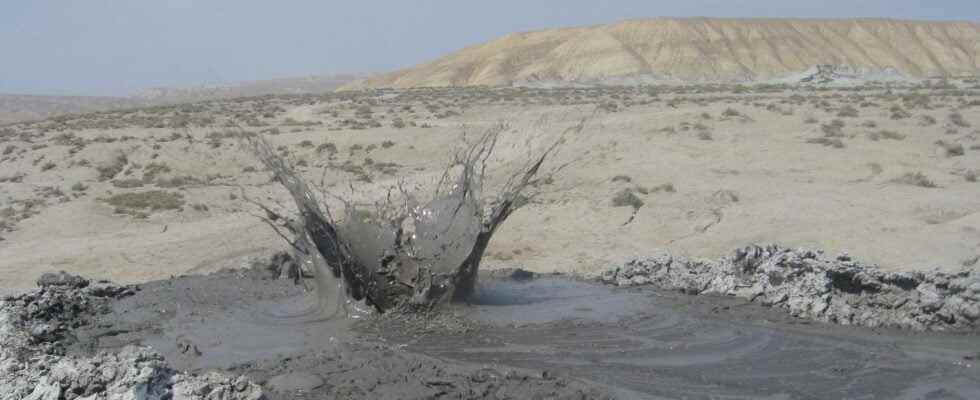When we hear the word “volcano” we usually think of lava and magma. But there is another type of volcanism, which can be just as devastating. These are the mud volcanoes. Here, no molten rock or ash plume. These eruptions are characterized by an emission of cold and muddy fluids.
You will also be interested
In comparison to “traditional” volcanoes which are based on magmatic processes, mud volcanoes are still relatively unknown. And yet, the damage they can cause can be just as great, as evidenced by the eruption of Lusi, Sidoarjo, a mud volcano that appeared in Indonesia in 2006. The mudslides generated by this volcano have displaced more than 40,000 people and caused extensive material damage. But how does this type of volcanism ?
Observable volcanoes in very specific geological contexts
The volcanic edifices created by this type of eruption resemble classical volcanoes, although they are usually much smaller in size. They present a morphology conical and a crater, from which are ejected sediments laden with water and gas. The largest, however, can reach several kilometers in diameter and up to 600 meters high. Others will only be represented by a simple hole in the ground. Formerly called salses, these buildings result from the expulsion of different gases, mainly methane, carbon dioxide, of the’nitrogen and others hydrocarbons light. All mixed with water vapor and mud (mixture ofclay and water). The expelled gases can sometimes ignite, generating a column of fire.
Mud volcanoes can be seen at Earth, but also in the oceanic domain. The best known examples are those of Macalube in Italy, Bledug Kuwu and Sidoarjo in Indonesia, the Berca volcano in Romania and that of Zalzala Jazeera in Pakistan.
This type of volcanism can appear in two different geological contexts: at the level of the zones of subduction, or in the deltas (current or former) of great rivers. However, these two environments are characterized by the presence of loose sediments and water. Two ingredients necessary for the birth of a mud volcano. But that’s not all. Because to generate this type of volcanism, the fluids must also be put under pressure.
Waterlogged sediments and pressurized gas
In the oceanic domain, mud volcanoes are particularly localized at the level of accretion prisms sedimentary located at the entrance to subduction pits. In these zones, the sediments resting on the oceanic plate passing in subduction are scraped by the stopper represented by the overlapping plate and will accumulate in the form of a prism. The water circulates intensely in the heart of these large sedimentary structures and the tectonic compressive stress will cause it to come out, a bit like a sponge that one would squeeze regularly. The fluids, rather cold and loaded with sediment, will then emerge in the form of oozes diffuse or localized sources, leading to the formation of mud volcanoes.
In the continental domain, mud volcanoes are associated with the escape of water and gas trapped by a relatively rapid deposition of sediment. In general, the accumulation of sediment is slow enough to allow the fluids to escape gradually. But in some environments the sedimentation is so strong that the water will get trapped in depth, sometimes with organic material, which by degrading will produce gas. The sediment load which gradually accumulates will put pressure on these deep, waterlogged layers. When the fluid will eventually escape, it will lead to the formation of mud volcanoes. In some cases, the migration of fluids to the surface is stopped by an impermeable level. The fluids will then accumulate, gradually increasing the pressure. It suffices that the system is destabilized (earthquake, drilling …) so that it causes it to open and a sudden release of pressure, causing an eruption of muddy fluid which can be long and devastating.
Mud volcanoes are therefore often found in contexts of sedimentary basins old, such as the Po plain (Nirano mud volcanoes), or in some oil basins. If most mud volcanoes are therefore located below sea level or in uninhabited areas, it can happen that they appear in urbanized areas, as was the case for Sideoarjo volcano, on the island of Java. The birth of this volcano is the result of an important sediment stacking over several million years, in an extending basin resumed to the current one in a compressive context.
Interested in what you just read?
.
fs12
